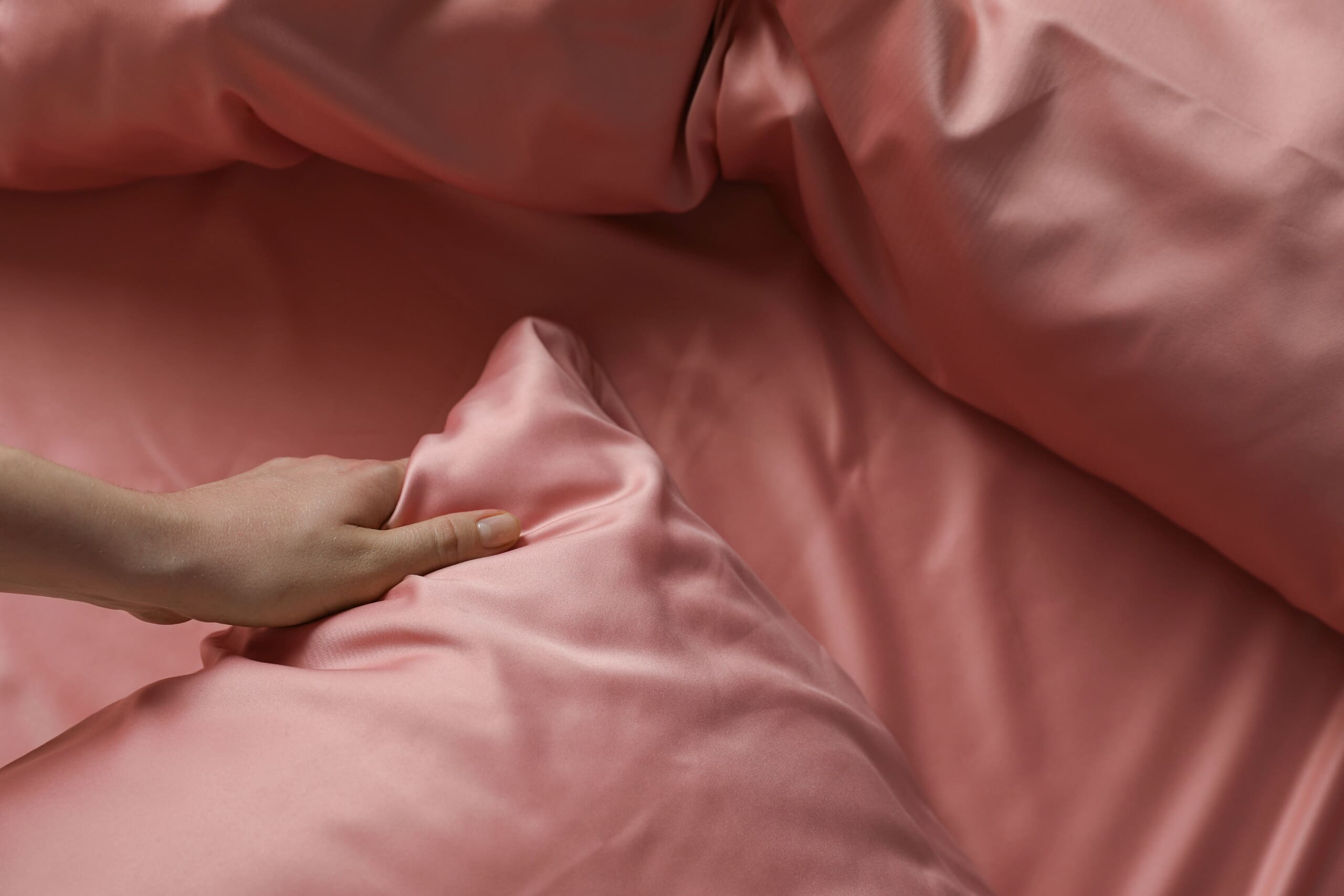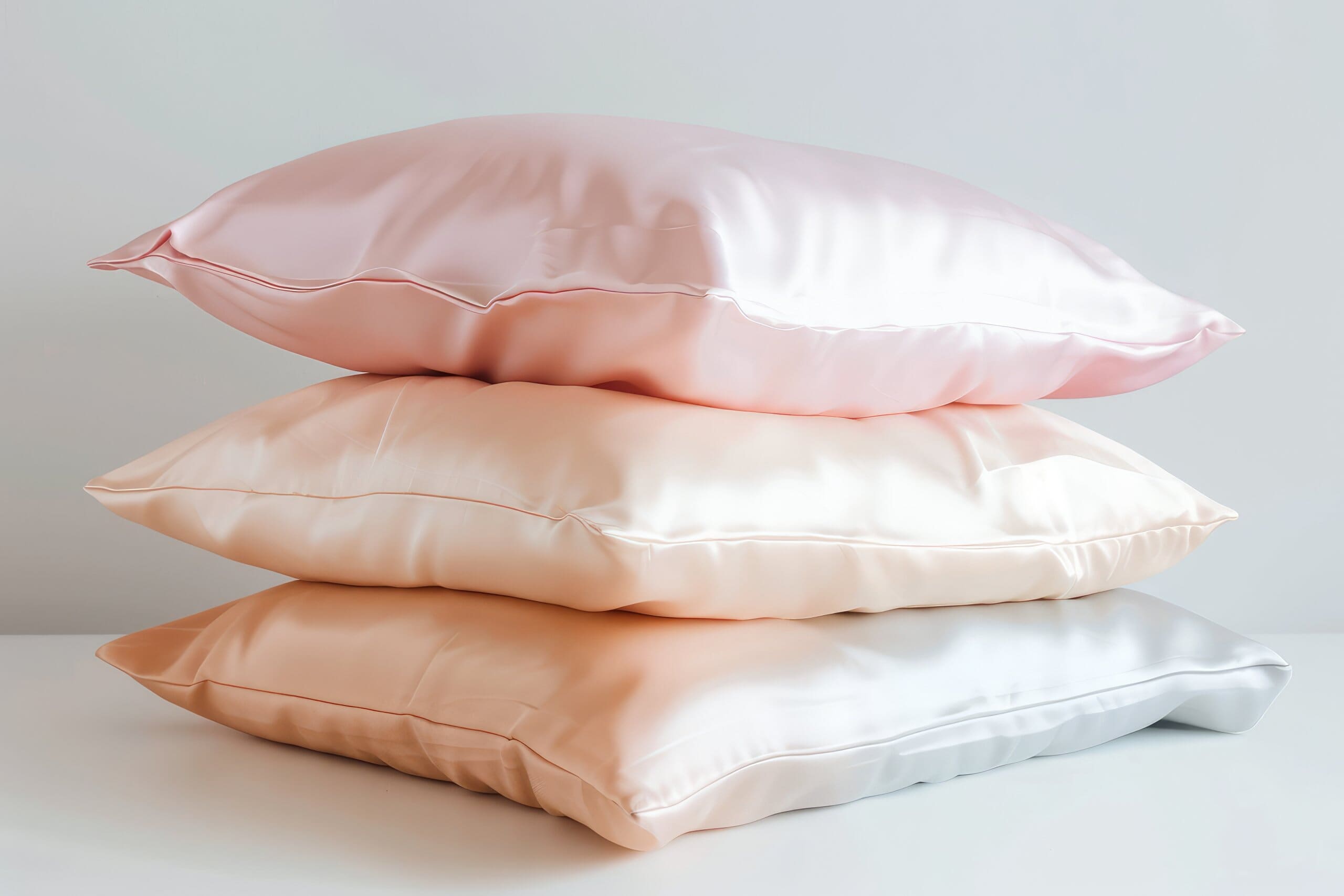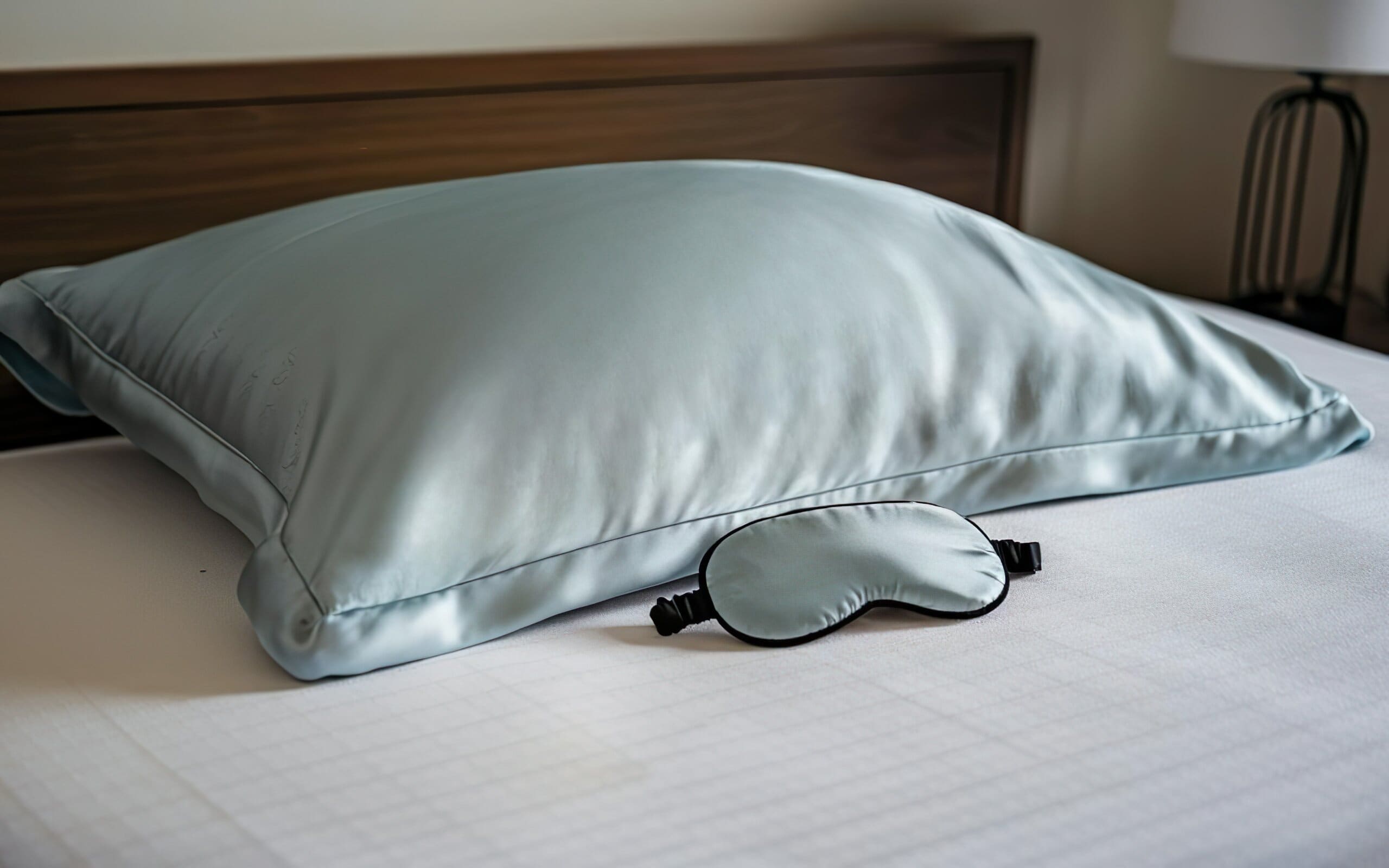When you hear 'luxury bedding', what’s the first thing that springs to mind? Classic Egyptian cotton? Smooth satin, perhaps? Or is it the soft-to-the-touch, exceptionally decadent fabric that is silk?
Long associated with expense and extravagance, nowadays, silk bedding is far more affordable than it’s ever been, meaning that everyone now has the opportunity to enjoy the cooler side of this sought-after material.
However, if you’ve been keeping an eye on recent bedding material research (like we all do, right?), then you may have noticed that advice around silk pillowcases has become increasingly common – specifically the various silk pillow benefits such a bedding choice can offer.
But what exactly are the benefits of silk pillowcases, and is there any truth to them? Take a look at our silk pillowcase guide below to find out more about them, and what to look out for if you’re planning on buying a silk pillowcase in the future.

Satin vs silk pillowcases: what’s the difference?
Before diving headfirst into the various silk pillow benefits, we thought it might be helpful to highlight the differences between silk pillowcases and their close cousin – satin. After all, at first glance, these two different fabrics can look rather similar.
And to be fair, from a certain standpoint, there isn’t much difference between satin vs silk pillowcases. Both are soft on the skin and can help reduce hair frizz. However, silk pillowcases tend to be of much higher quality than satin.
Silk is what’s known as a natural weave, meaning it can be found organically in nature, while satin is a synthetic weave designed to mimic the properties of silk without the associated costs.
As a result, satin pillowcases are usually much cheaper than silk, but silk pillowcases tend to be tougher and will last far longer if cared for properly.
What are the core silk pillow benefits?
Ok, with the difference between satin and silk cleared up, let’s now turn to the main benefits provided by silk pillowcases, specifically those that have been proven to include all of the following:
- Soft on the skin – first things first, silk is an incredibly soft material, which, besides being nice to touch, makes it great for your skin when lying on it for prolonged periods. This is because the softness of the silk applies less friction to your skin, reducing irritation and pressure, which in turn can reduce wrinkles and the redness associated with acne and other sensitive skin conditions.
- Minimal moisture absorption – alongside being easy on your skin, silk also has a very low moisture absorption rate, meaning it pulls less water from your body as you sleep, helping to keep your skin more hydrated overnight.
- Excellent temperature regulation – being naturally cool to the touch, silk is fantastic at helping you stay cool in bed. This is thanks to the breathability of its fibres, which don’t trap heat, and its moisture-repellent properties, both of which combine together to reduce the temperature of your pillow, even on those hot summer evenings.
- Less stress on your hair – silk pillowcases are well-known for being sleek and smooth, which is exactly what you want if you’re looking to avoid frizzy morning hair, as the reduced friction will put less stress on your hair while you sleep, which in turn reduces the likelihood of that dreaded bedhead hair.
- A luxury feel – lastly, silk is an incredibly luxurious fabric, one that oozes comfort and helps you relax as you drop off. In other words, it’s a must-have fabric if you want to experience that pampered feeling every time your head hits the pillow.
What are some of the myths surrounding silk pillowcases?
While the above silk pillow benefits have been clinically proven to be genuine, at least to some degree, there are also a few myths floating around out there about silk pillowcases that simply aren’t true.
For example, pillowcases cannot provide additional amino acids for your hair. That’s simply not how amino acids work. And while silk itself might have additional amino acids within it, you would need to consume the silk in order to receive the benefits of them (something we’re quite sure no one wants to do).
On top of this, while silk can be beneficial for any sleepers with sensitive skin, it is not, in fact, a hypoallergenic material. Allergens of all kinds will still build up on your pillow, even if it’s made of silk, and you’ll likely have to combine it with a pillow protector if you want to keep non-sleep-related allergens at bay.
Do silk pillowcases help with hair health?
By no means a cure-all for frizzy hair, there is indeed some evidence to support silk pillowcases being beneficial for the health of your hair. Although we might not be aware of it, what sort of pillowcase you choose to sleep on can have a surprising impact on your hair’s health.
This is due to the friction it exerts on your hair’s follicles. Essentially, the rougher the fabric, the more stress your hair will be under when you turn your head on your pillow, which in turn can cause a higher degree of breakage and increase the likelihood of morning bed hair.
Not only that, but if your pillowcase material is prone to absorbing moisture, it can leave your hair dehydrated.
However, because silk is so soft and somewhat moisture-resistant, it exerts a minimal level of friction without absorbing additional moisture. As a result, you may find that you wake up with smoother and silkier hair than if you stuck to a traditional cotton pillow.
Do silk pillowcases help with acne reduction?
In a similar vein to improving the overall quality of your hair health, silk pillowcases have been shown to at least reduce the general visibility of both acne and various skin conditions.
It does not, however, prevent acne or eczema breakouts in the first place. Instead, the minimal friction of silk reduces the irritation on your skin. This in turn will reduce inflammation around your acne or eczema, lowering irritation levels and helping it to clear up faster. Sleep itself has excellent benefits for your skin, so consider how else you can get a proper night's sleep too.

Are there any downsides to silk pillowcases?
Generally speaking, there are no direct downsides to choosing a silk pillowcase over a normal pillowcase. However, given their luxury status and the way in which they’re made, silk pillowcases are naturally more expensive to buy than other traditional pillowcase materials.
On top of this, despite being rather tough, silk pillowcases do require a higher level of maintenance to look after them and to keep them looking fresh, which might not be something everyone has time to consider.
What to look for when choosing a silk pillowcase
As with shopping for any form of bespoke bedding, there are a few things you need to bear in mind when looking for a silk pillowcase. First and foremost, you want to be sure that your chosen silk pillowcase is the right size for your pillows and bed, otherwise, you’ll risk it sliding off during the night and get none of the benefits.
However, you should also be aware of the type of silk pillowcase you’re purchasing. Although you might find a pillowcase claiming to be made of silk, there’s every chance it could be a blend of silk and synthetic materials.
While cheaper, these hybrids should be avoided if you want to maximise the potential benefits a silk pillowcase can provide. Instead, keep an eye out for 100% silk pillowcases, such as those provided by Mulberry.
Other ways to improve your nightly rest
So, now you know about the various silk pillow benefits you could bring to your bed, and whether or not such a pillowcase fabric is well-suited to your sleeping needs. As good as silk pillowcases are though, they’re not for everyone, and you might find that a more traditional cotton or synthetic pillowcase is perfect for your needs.
But, regardless of what sort of pillowcase you prefer, you need the right pillow to go inside it. Our guide to choosing the right pillow for you will give you lots of tips and advice, and with our award-winning free next-day delivery service, you can enjoy your new bedding as soon as tomorrow.











